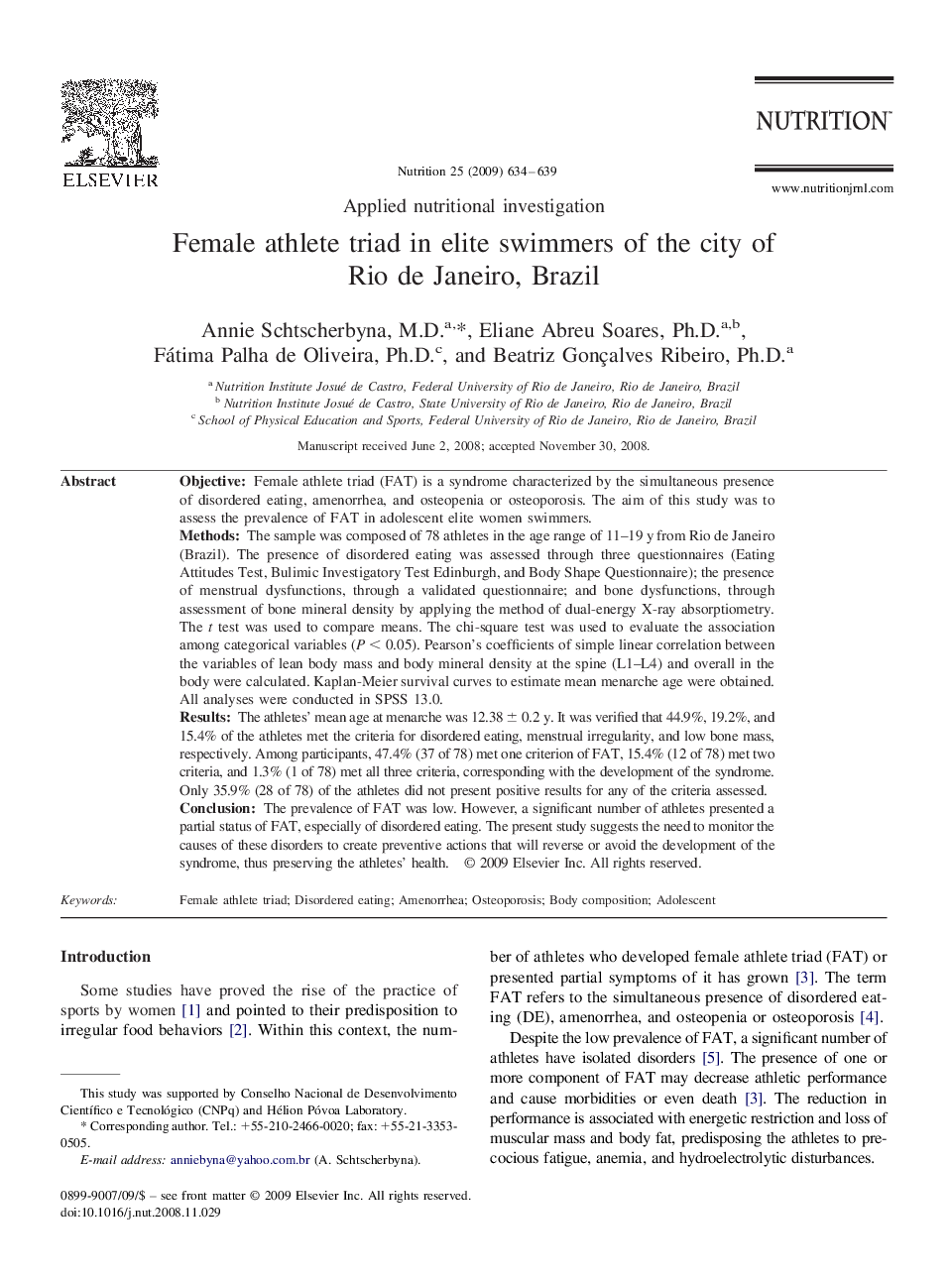| Article ID | Journal | Published Year | Pages | File Type |
|---|---|---|---|---|
| 3276968 | Nutrition | 2009 | 6 Pages |
ObjectiveFemale athlete triad (FAT) is a syndrome characterized by the simultaneous presence of disordered eating, amenorrhea, and osteopenia or osteoporosis. The aim of this study was to assess the prevalence of FAT in adolescent elite women swimmers.MethodsThe sample was composed of 78 athletes in the age range of 11–19 y from Rio de Janeiro (Brazil). The presence of disordered eating was assessed through three questionnaires (Eating Attitudes Test, Bulimic Investigatory Test Edinburgh, and Body Shape Questionnaire); the presence of menstrual dysfunctions, through a validated questionnaire; and bone dysfunctions, through assessment of bone mineral density by applying the method of dual-energy X-ray absorptiometry. The t test was used to compare means. The chi-square test was used to evaluate the association among categorical variables (P < 0.05). Pearson's coefficients of simple linear correlation between the variables of lean body mass and body mineral density at the spine (L1–L4) and overall in the body were calculated. Kaplan-Meier survival curves to estimate mean menarche age were obtained. All analyses were conducted in SPSS 13.0.ResultsThe athletes' mean age at menarche was 12.38 ± 0.2 y. It was verified that 44.9%, 19.2%, and 15.4% of the athletes met the criteria for disordered eating, menstrual irregularity, and low bone mass, respectively. Among participants, 47.4% (37 of 78) met one criterion of FAT, 15.4% (12 of 78) met two criteria, and 1.3% (1 of 78) met all three criteria, corresponding with the development of the syndrome. Only 35.9% (28 of 78) of the athletes did not present positive results for any of the criteria assessed.ConclusionThe prevalence of FAT was low. However, a significant number of athletes presented a partial status of FAT, especially of disordered eating. The present study suggests the need to monitor the causes of these disorders to create preventive actions that will reverse or avoid the development of the syndrome, thus preserving the athletes' health.
